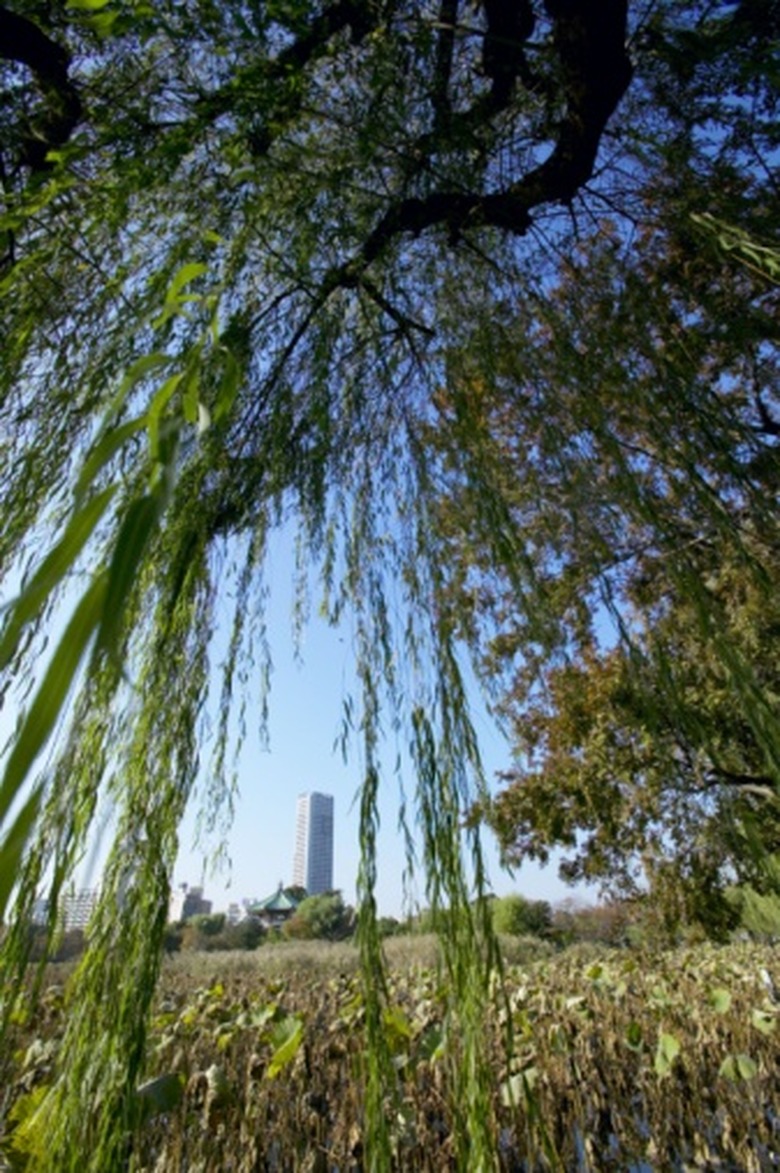The Average Height Of A Willow Tree
The average height of the willow trees in your area depends largely on which varieties are growing. There are four main types that grow in the U.S.: weeping willow, desert willow, pussy willow and curly willow.
Average Height
Based on plant profiles published by the National Arbor Day Foundation, the average height of a willow ranges from 15 to 40 feet high. The desert willow and pussy willow both reach a mature height of between 15 and 25 feet. The curly willow averages a height of 30 feet, while the weeping willow grows to between 30 and 40 feet tall.
Average Spread
As the height varies depending on the type of willow grown, so does the spread or average width of the tree. Desert willows reach an average spread of 10 feet, according to the National Arbor Day Foundation. The pussy willow averages between 12 and 25 feet, and the curly willow averages between 15 and 20 feet. The weeping willow is the largest tree, with an average spread of 35 feet.
- The average height of the willow trees in your area depends largely on which varieties are growing.
- The curly willow averages a height of 30 feet, while the weeping willow grows to between 30 and 40 feet tall.
Planting Zones
The best way to ensure that willow trees reach their ideal height and spread is to plant species in their ideal climate. The weeping willow and curly willow grow best in the moderate climates of the mid-United States, or in U.S. Department of Agriculture planting zones 6 through 8. The pussy willow thrives in zones 4 through 8, and the desert willow is ideal for zones 7 through 9.
Willow Tree Dead?
Willow trees are often planted to enhance the natural landscape. In addition, willow trees may receive winter injury that prevents them growing in the spring. Spring is the best time to see if your willow tree is dead. The trees defoliate and stops producing growth. In the early spring, willows come out of dormancy to exhibit new growth. Oftentimes, long winters may delay willows from coming out of dormancy. Willow trees bloom in the spring. Wait for the summer to check your willow's leaves, as suggested by Houston Parks and Recreational Department. Sterilize the knife before making a scrape in case the tree hasn't died. Brown or black indicates a dead tree.
- The best way to ensure that willow trees reach their ideal height and spread is to plant species in their ideal climate.
- In addition, willow trees may receive winter injury that prevents them growing in the spring.
References
- National Arbor Day Foundation: Weeping Willow
- National Arbor Day Foundation: Desert Willow
- North Dakota State University: Questions on Willow
- National Arbor Day Foundation: Pussy Willow
- National Arbor Day Foundation: Scarlet Curly Willow
- North Dakota State University Extension: Golden Willow
- Houston Parks and Recreation Department: Dead Tree Removal
- Iowa State University Extension; Pussy Willows Usher in Spring; Linda Naeve; 2003
- Penn State University Extension; Willow Diseases; Gary W. Moorman
